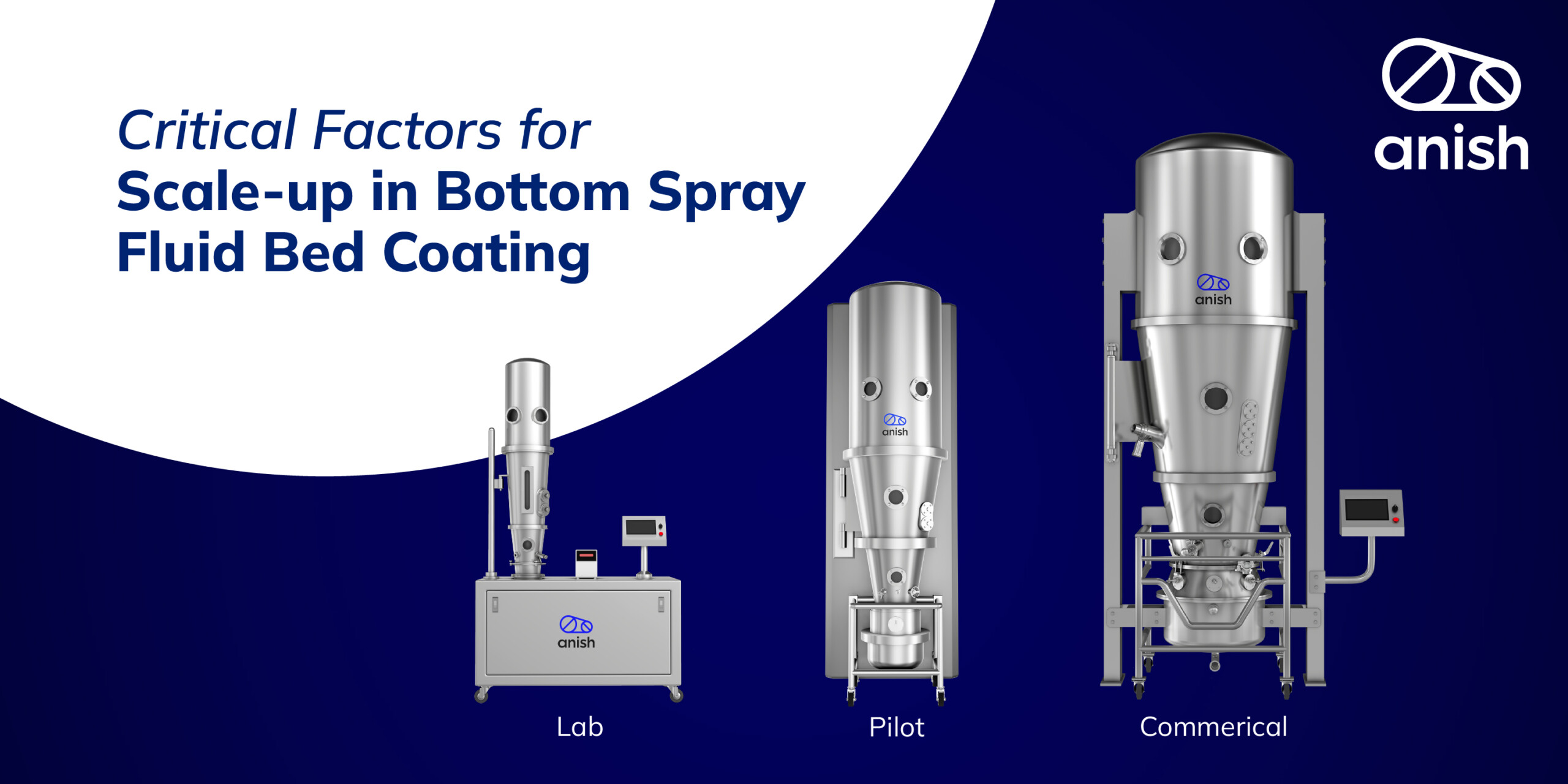Critical Factors for Scale-up in Bottom Spray Fluid Bed Coating
Scaling up the bottom spray (Wurster) coating process is a crucial step in pharmaceutical, nutraceutical, and chemical industries where uniform coating and process efficiency are essential. Scaling up ensures that small-scale laboratory processes can be translated into full-scale production while maintaining consistency, minimizing material loss, and ensuring regulatory compliance.
A well-defined scale-up procedure is necessary to:
- Maintain uniformity in coating thickness and quality.
- Optimize process parameters for efficiency and cost-effectiveness.
- Prevent defects such as agglomeration, uneven coating, or material degradation.
- Ensure batch-to-batch reproducibility and regulatory adherence.
- Improve drying efficiency and reduce production downtime.
The success of scale-up depends on multiple interrelated parameters that must be carefully controlled. These parameters can be categorized into five key areas:
- Equipment Variables
Equipment selection and configuration play a crucial role in process efficiency and product quality. Factors such as spray gun type, nozzle placement, and airflow distribution determine coating uniformity. Choosing the right equipment ensures proper fluidization, effective coating distribution, and minimal material loss.
- Equipment capacity
- Bottom spray column diameter & column height
- Air distribution plate
- Type of product containers
- Nozzle tip diameter & air cap position
- Type of spray guns
- Number of nozzles
- Filter bag types
- Coating Solution Dispersion Variables
The physical and chemical properties of the coating solution affect the coating process’s adhesion, uniformity, and efficiency. Parameters such as solid content and viscosity determine the spray ability and film formation. An optimized coating solution helps maintain process stability and ensures effective layer deposition.
- Solid content
- Solution dispersion viscosity
- Holding time
- Aqueous / Non-aqueous composition
- Preheating Variables
Preheating ensures that the product reaches the required temperature for effective coating adhesion. Controlled air parameters optimize drying and reduce process variability. Proper preheating prevents thermal stress and allows for uniform fluidization of particles before coating begins.
- Inlet dew point
- Shaking interval/duration
- Inlet air temperature
- Product temperature
- Air velocity and volume
- Atomizing air pressure
- Preheating time
- Spraying Variables
Spraying conditions determine the uniformity and thickness of the coating layer. Factors such as spray rate and atomizing air pressure impact the efficiency and consistency of the process. Controlling these parameters helps prevent over-drying, excessive material loss, and uneven coating.
- Inlet dew point
- Shaking interval/duration
- Inlet air temperature
- Product temperature
- Pump RPM & spray rate (gm/gun/min)
- Atomizing air pressure
- Drying Variables
Drying parameters ensure proper solvent evaporation and film formation. Controlling air temperature and volume is crucial for preventing over-drying or inadequate curing. Effective drying conditions lead to stable and defect-free coated products, ensuring the final product meets required standards.
- Inlet air dew point
- Inlet air temperature
- Inlet air volume
- Exhaust temperature
- Atomization air pressure
- Drying time
By systematically controlling these parameters, the bottom spray fluid bed coating process can be effectively scaled up while maintaining coating uniformity, efficiency, and product integrity. Proper scale-up strategies not only enhance product performance but also reduce process failures, leading to cost savings and improved manufacturing throughput.
Anish Pharma is a globally recognized expert in fluid bed processing, delivering advanced solutions for drying, granulation, and coating applications. With over three decades of experience, the company provides high-efficiency systems tailored to pharmaceutical and industrial needs. Its innovative technology ensures precision, consistency, and superior product quality across all installations.
Article written by Dr. Amita Karnik, a seasoned process expert in granulation and pelletization with over three decades of experience, currently leading the Application Lab at Anish Pharma Equip Pvt. Ltd.


